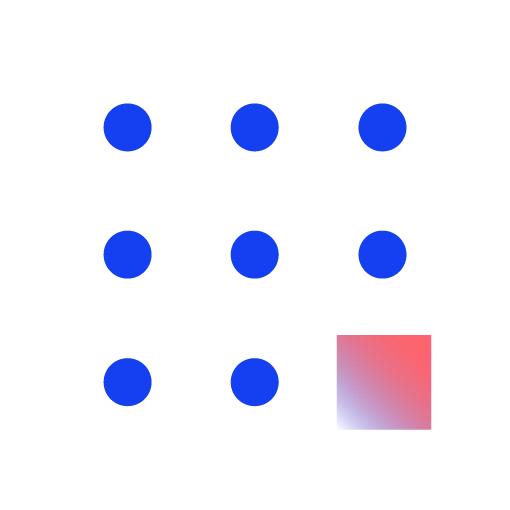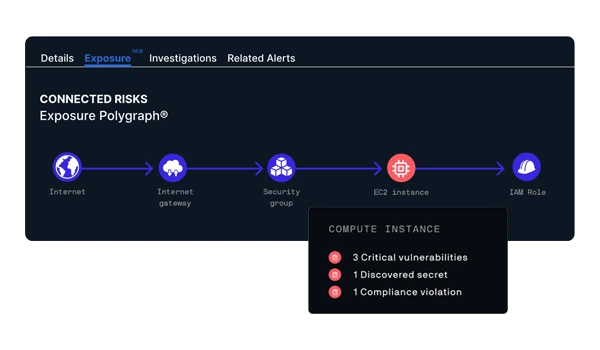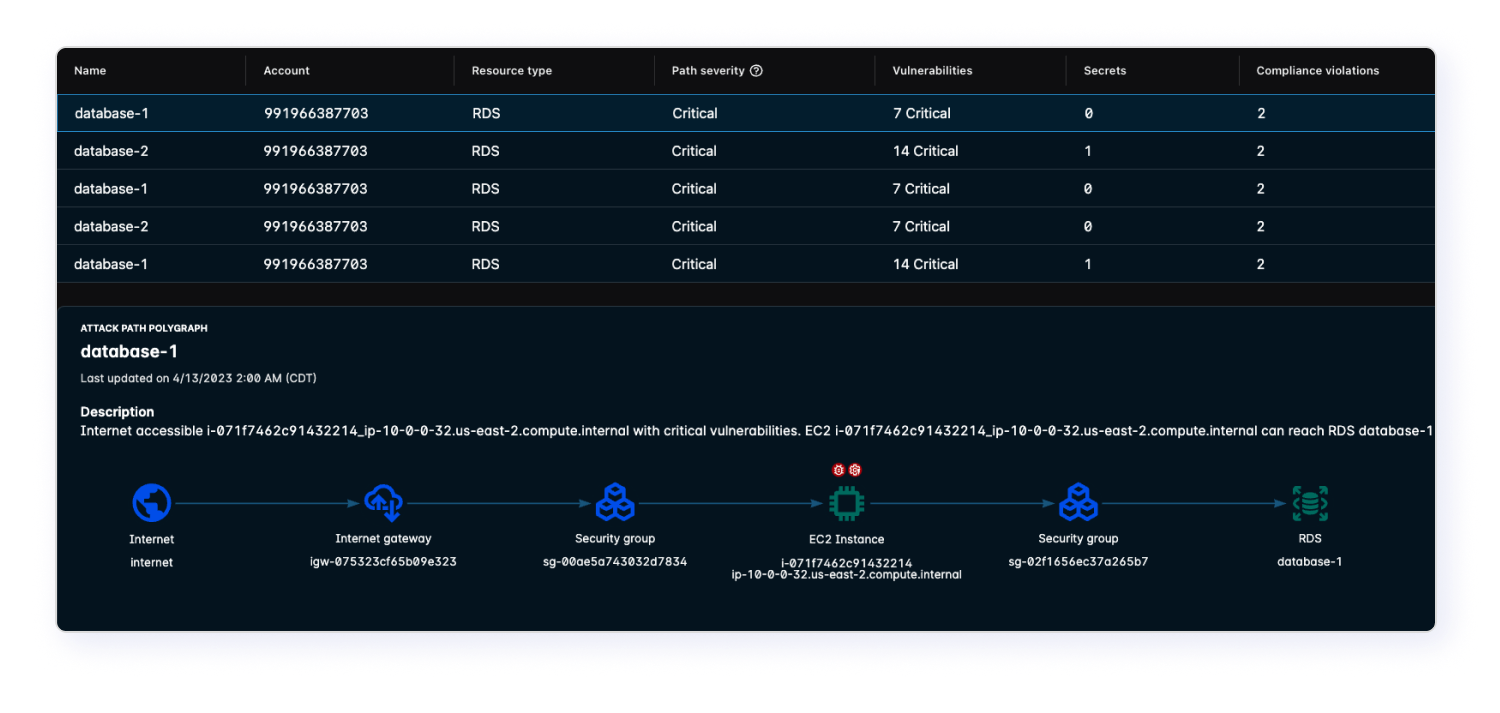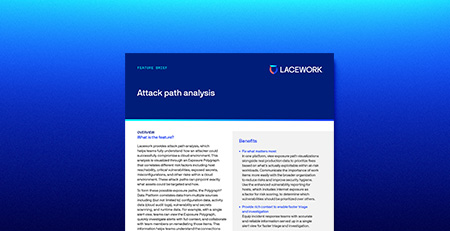Connect attack paths to runtime data
Combine attack path analysis with superior threat detection to map cloud attacks and find active intruders

Risk management fails without context
Cloud attacks exploit multiple risks in sequence. Without knowing where your greatest risks are, it’s tough to know what to fix first.

Don’t miss real problems in alert noise
Cloud risks cause lots of disparate alerts. If you can’t identify your top risks, teams may struggle to prioritize what matters the most.

Isolated alerts don’t tell the whole story
Risk severity is often based on CVSS scores. But to accurately gauge severity, risks must be considered in your own cloud context.

Spend time fixing, not chasing dead ends
Risk management without runtime context may have you fixing vulnerabilities in machines that aren’t even turned on.
GUIDED TOUR
A tour of attack path analysis
See how our platform helps organizations gain immediate visibility into top risks and attack paths to your critical data assets with attack path analysis.
Access guided tour
BENEFITS
Prioritize risk with a unified dashboard
Understand your top work items, the most exploitable attack paths leading to databases, and any at-risk runtime workloads from one place.
Fix what matters most
Prioritize fixes based on what’s exploitable within at-risk workloads by viewing attack path analysis visualizations alongside production data.
Speed triage and investigation
Protect your most critical data assets and help your teams effectively investigate and respond to incidents with accurate and relevant context.
Break silos with a shared platform
Empower security, incident response, and operation teams to communicate easily and align risk reduction efforts through a single shared platform.

OUR APPROACH
Think like an attacker. Fix like an expert.
Gain immediate visibility into your top cloud risks and attack paths with attack path analysis. Then learn how to fix your issues fast.
See attack paths like an attacker
- Use agentless and agent-based methods to ingest configuration data, activity data, runtime data, vulnerability and secrets scanning, and more
- Correlate risk factors like host reachability, vulnerabilities, exposed secrets, misconfigurations, and listening ports
- Visualize potential attack chains to understand what assets could be targeted and how

Prioritize your riskiest to-dos
- In a single dashboard, see the most risky entities in your environment
- Easily identify your top vulnerable hosts, top vulnerable container images, top attack paths with secrets, and top exposed data assets
- Assess your top risks with an assigned severity, determined by the value of the at-risk assets that could be impacted by successful attacks

Investigate faster with the full picture
- Visualize all the ways attackers can move laterally or access your data and dig deeper into specific posture concerns to reduce risks
- Save time from not having to do manual comparisons
- Facilitate faster remediation with development teams

“Lacework gives us all the information in one panel so you can strive for perfection without wasting money. It gives us that visibility and allows us to prioritize what we need to.”
Paul Good
Security Engineer
Read case studyCOMMON QUESTIONS
Attack path analysis allows you to see the potential risks in your environment from the lens of an attacker. Attackers rarely breach a cloud environment with just one hop. In fact, they leverage multiple gaps successively to first infiltrate the cloud environment and then move laterally and escalate privileges to reach your critical data assets.
Attack path analysis plays a vital role in understanding how a cloud attack could unfold by visually laying out potential attack paths across your entire cloud environment and exposing internet-exposed hosts with critical vulnerabilities and other risks that can be exploited by adversaries to reach and compromise your data assets.
By simulating various attack scenarios and examining the possible paths an attacker might follow, security teams can effectively pinpoint their biggest risks and implement proactive measures to safeguard their cloud environment. Incorporating attack path analysis into a comprehensive security strategy helps organizations minimize the risk of cloud attacks and maintain a strong security posture in the ever-evolving world of cloud computing.
Attack path analysis and attack vectors are both important concepts in cybersecurity, especially when it comes to an understanding and preventing cloud attacks. An attack vector refers to the method or technique used by an attacker to gain unauthorized access to a network, system, or application. Common attack vectors include phishing emails, malicious websites, and software vulnerabilities. In contrast, attack path analysis is a systematic approach to identifying and evaluating the potential routes an attacker may take to exploit a target within a network or system.
When addressing cloud security, it’s crucial to consider both attack vectors and the results of attack path analysis. By understanding the various attack vectors, organizations can better prepare for and defend against potential threats to their cloud infrastructure. At the same time, attack path analysis provides valuable insights into the chain of events that could occur during a cloud attack, enabling security teams to identify and remediate vulnerabilities before they can be exploited. By incorporating both attack vector identification and attack path analysis into a comprehensive security strategy, organizations can enhance their defenses and minimize the risk of cloud attacks, ensuring the safety and integrity of their valuable digital assets.
Lacework attack path analysis is especially helpful in detecting and mitigating insider threats. By mapping out potential attack paths within an organization’s network or system, security teams can identify risks that could be exploited by insiders with malicious intent. These vulnerabilities may include misconfigurations, weak access controls, or unpatched software. Once these vulnerabilities are identified, organizations can take steps to remediate them, thereby reducing the risk of insider attacks.
With Lacework, attack path analysis can also help monitor user behavior, detecting anomalies and suspicious activities that could indicate an insider threat. By proactively identifying and addressing these issues, organizations can strengthen their overall security posture and protect against insider threats.
Resources & insights
Featured Insights


